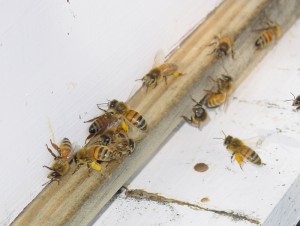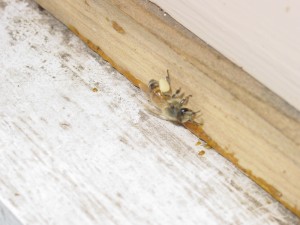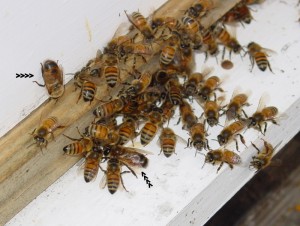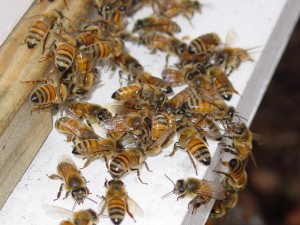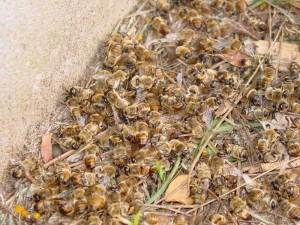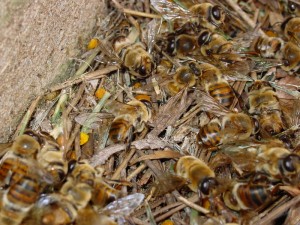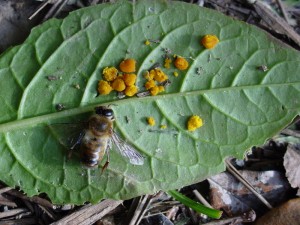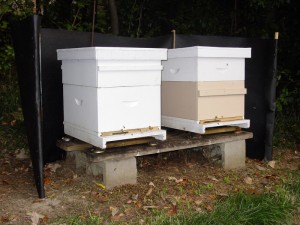Here are a couple of photos from October 18th. The foragers are still bringing in pollen, mostly goldenrod (bright orange-yellow), but some pale pollen, too.
Today (October 21st) we returned from a trip to Atlanta to find considerable activity at the hive entrances. It looked like a bee wrestling match, with numerous bees locked together in pairs or groups, often falling off the landing board onto the ground. It took a moment to realize what was going on – the drones were being evicted.
Drones (the male honeybees) are easily distinguished in a hive. They are larger and appear “chunky”, with a blunt or rounded abdomen and large eyes. Drone larvae hatch from eggs which the queen bee does not fertilize; thus they have only half the chromosome count of worker (and queen) bees (16 chromosomes for drones, 32 for the others). Of course, drones serve a valuable role by mating with queens from other hives. A queen will typically mate with 10 to 20 drones during her mating flights, and drones die after mating.
Drones comprise up to 15% of the total hive population, but they are normally expelled from the hive in the fall, or whenever there is nectar or pollen supplies become scarce. During this time, worker bees stop feeding the drones, weakening them, and then they are ejected from the hive. Since plenty of pollen was still coming in, it is likely that these hives recognized (perhaps by the changes in day/night lengths or weather) that it was just time for the drones to go. There was a cold snap a few days ago; my guess is that was the trigger for the event. Drone eviction is a sign that the hive is getting ready for winter.
I don’t why so much pollen wound up being lost, but my guess is the traffic congestion caused by evicting the drones bumped off some of the pollen loads being brought in by incoming foragers.
Bee hives need ventilation during the winter to prevent moisture buildup, but protection from wind is beneficial. I decided a simple windbreak made of 30-weight tarpaper would be sufficient.

